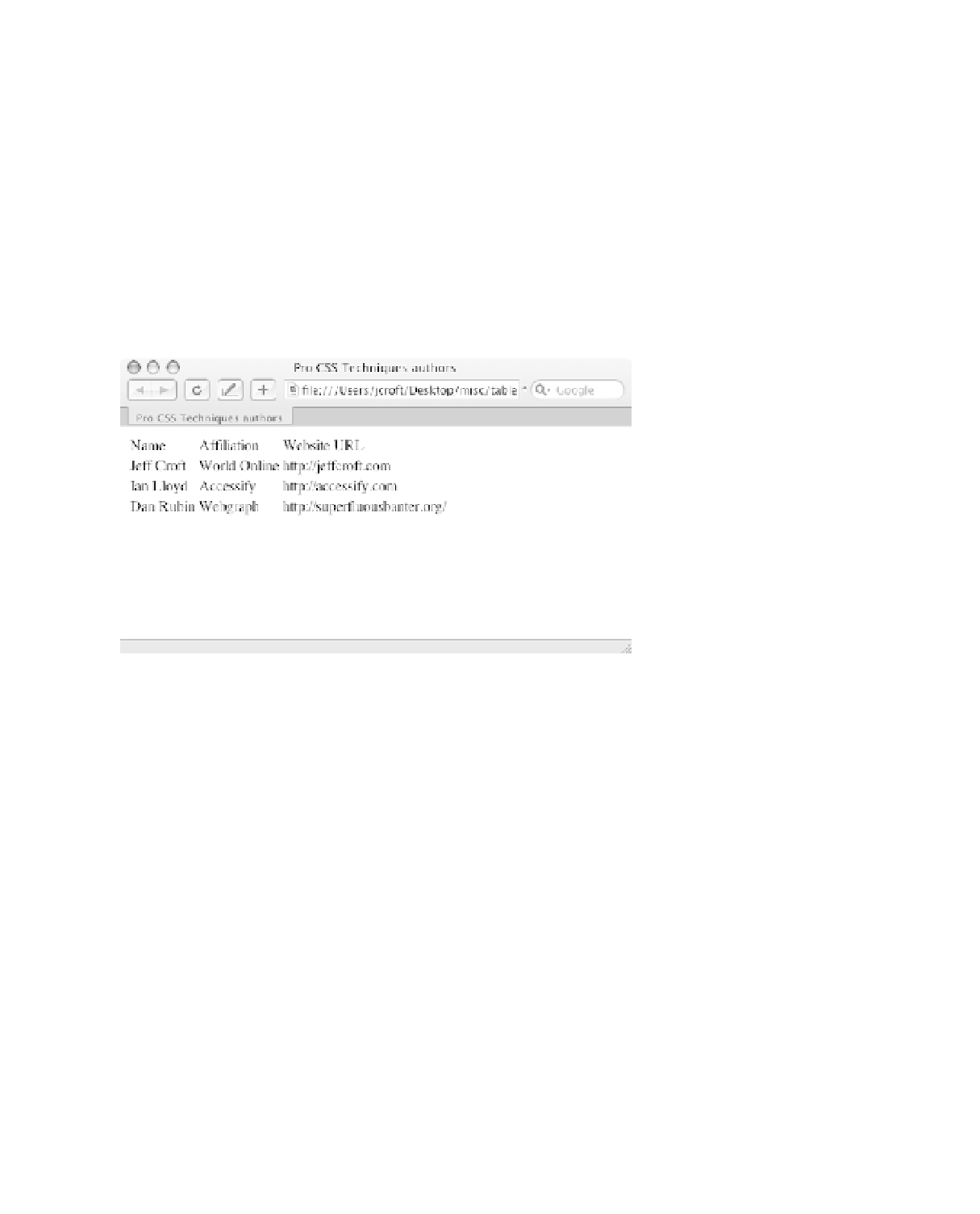HTML and CSS Reference
In-Depth Information
<tr>
<td>Ian Lloyd</td>
<td>Accessify</td>
<td>http://accessify.com</td>
</tr>
<tr>
<td>Dan Rubin</td>
<td>Webgraph</td>
<td>http://superfluousbanter.org/</td>
</tr>
</table>
This code results in a table that looks like the one in Figure 10-1.
Figure 10-1.
Basic, unstyled table using almost exclusivey
tr
and
td
elements
As you may have noticed, the (X)HTML for this table is almost exclusively
tr
and
td
ele-
ments. These are the building blocks of most (X)HTML tables, but they are only the beginning
of the host of table-related elements and attributes (X)HTML provides. Now we'll explore all
the other exciting table-related elements you have at your disposal.
The caption Element
By adding a
caption
element immediately after the opening
<table>
tag, you can provide
a name or short description of your table. While this is not required, it's a good practice that
adds extra context and meaning to your table. A
caption
element for our example table would
look like this:
<table>
<caption>Pro CSS Techniques authors</caption>
Note that while the
caption
element belongs at the top of your table, it does not have to
be displayed there. CSS offers a property for placement of the caption, which we'll discuss
later in the chapter.

